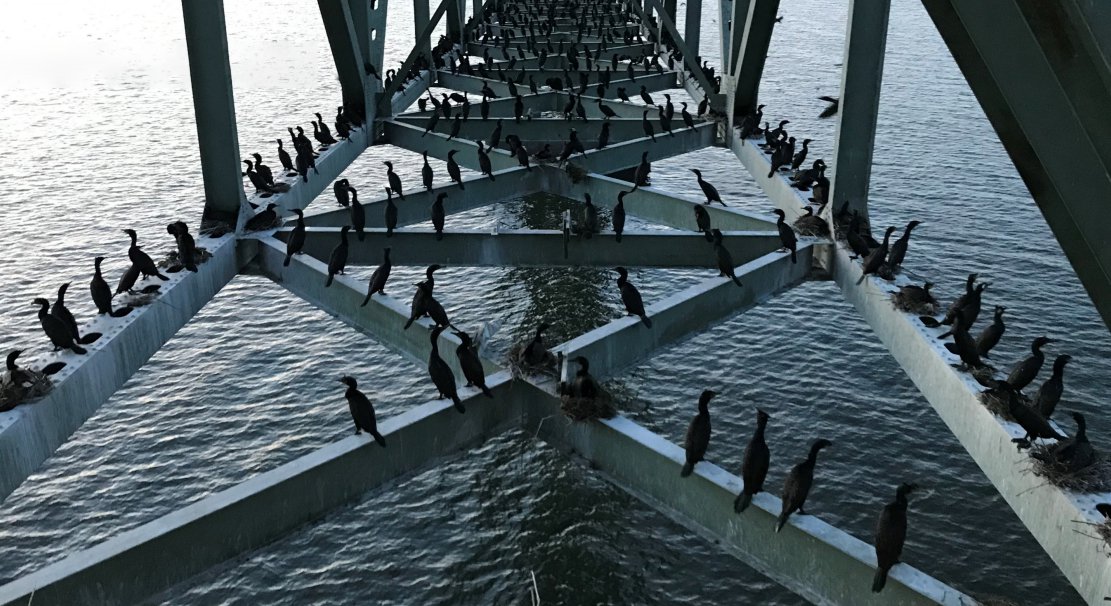Double-crested Cormorant Colony at Astoria-Megler Bridge to Be Relocated Back to East Sand Island
- December 06, 2023
- Carol Winkel

Representatives from the Oregon Department of Transportation and Oregon Department of Fish and Wildlife briefed the Council (see presentation and video) at its November meeting on the recently finalized engineering study and its recommendations to address the large double-crested cormorant colony that has been nesting on the Astoria-Megler Bridge.
The colony relocated from East Sand Island to the bridge after the U.S. Army Corps of Engineers implemented a management plan in 2015 to reduce their numbers on the island over concerns about predation of juvenile salmonids. While the numbers of cormorants did decline there, the colony moved upstream to the bridge and grew from 333 breeding pairs in 2014 to a peak of over 5,000 pairs in 2020.
It’s a tale of unintended consequences: The guano from the colony is accelerating corrosion of the Astoria-Megler Bridge, causing an estimated $1 million in damage annually and, distressingly, the Oregon Department of Fish and Wildlife estimates that estuary-wide predation rates on salmon may be higher than before. Since cormorants breeding further upriver have fewer alternative sources of food, they consume more salmonids as a proportion of their diet.
The engineering study included participation from tribes, the Inter-Tribal Fish Commission, non-profits, state and federal agencies, and consultants to determine the best strategy to deal with damage to the bridge caused by the colony. The options they considered included creating habitat on East Sand Island; considering alternative habitat; and creating habitat on the bridge.
In the end, the study recommended:
- Taking immediate action to address the safety impacts to the bridge
- Detering the double-crested cormorants from the bridge
- Re-establishing the colony back to East Sand Island
- Preventing redistribution upriver of the bridge
- Creating a funded, full-time position(s) to coordinate the effort of dozens of agencies and entities
The estimated costs to implement the recommendations are: In year 1 – $6 million in one-time costs and $3.1 million in recurring costs; in years 2-4 – $3.1 million in annual costs; and in years 4 and beyond - $400,000 for monitoring, hazing, and cleaning.
Learn More: Double-crested Cormorants Relocating Upriver Increases Predation of Salmon



